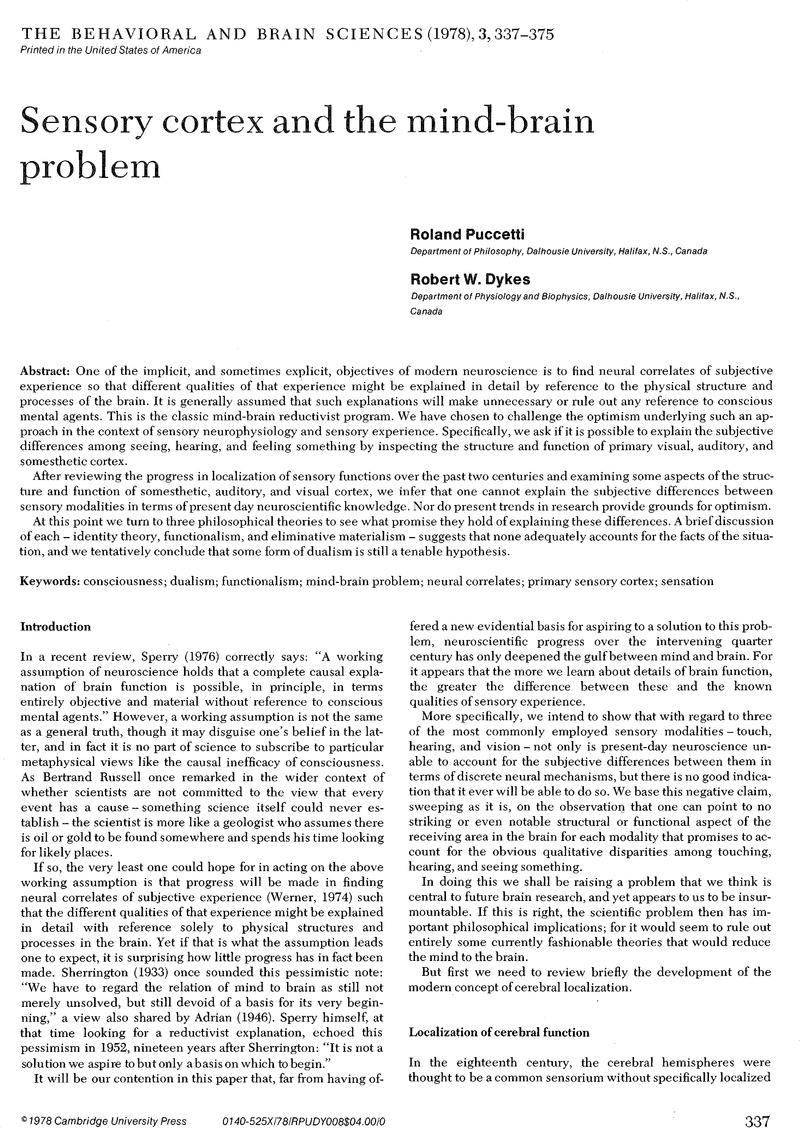No CrossRef data available.
Article contents
Are the properties of cells relevant for understanding consciousness?
Published online by Cambridge University Press: 04 February 2010
Abstract
An abstract is not available for this content so a preview has been provided. Please use the Get access link above for information on how to access this content.

- Type
- Open Peer Commentary
- Information
- Copyright
- Copyright © Cambridge University Press 1978
References
REFERENCES
Armstrong, D. M. The nature of mind. In: Borst, C. V. (ed.), The Mind - Brain Identity Theory. Macmillan, London, 1970.Google Scholar
Erdelyi, M. H.A new look at the New Look: perceptual defence and vigilance. Psychological Review. 81:1–25, 1974.CrossRefGoogle Scholar
Posner, M. I. & Klein, R. M. On the functions of consciousness. In: Kornblum, S. (ed.), Attention and Performance Vol. 4 Academic Press, New York, 1973.Google Scholar
Shallice, T. The dominant action-system: an information processing approach to consciousness. In: Pope, K. S. & Singer, J. L. (eds.), The Stream of Consciousness: Scientific Investigations into the Flow of Human Experience. Plenum Press, New York, 1978.Google Scholar
Turvey, M. T. Constructive theory, perceptual systems and tacit knowledge. In: Weimer, W. B. & Palermo, D. S. (eds.), Cognition and the Symbolic Processes, Erlbaum, Hillsdale, NJ, 1974.Google Scholar




